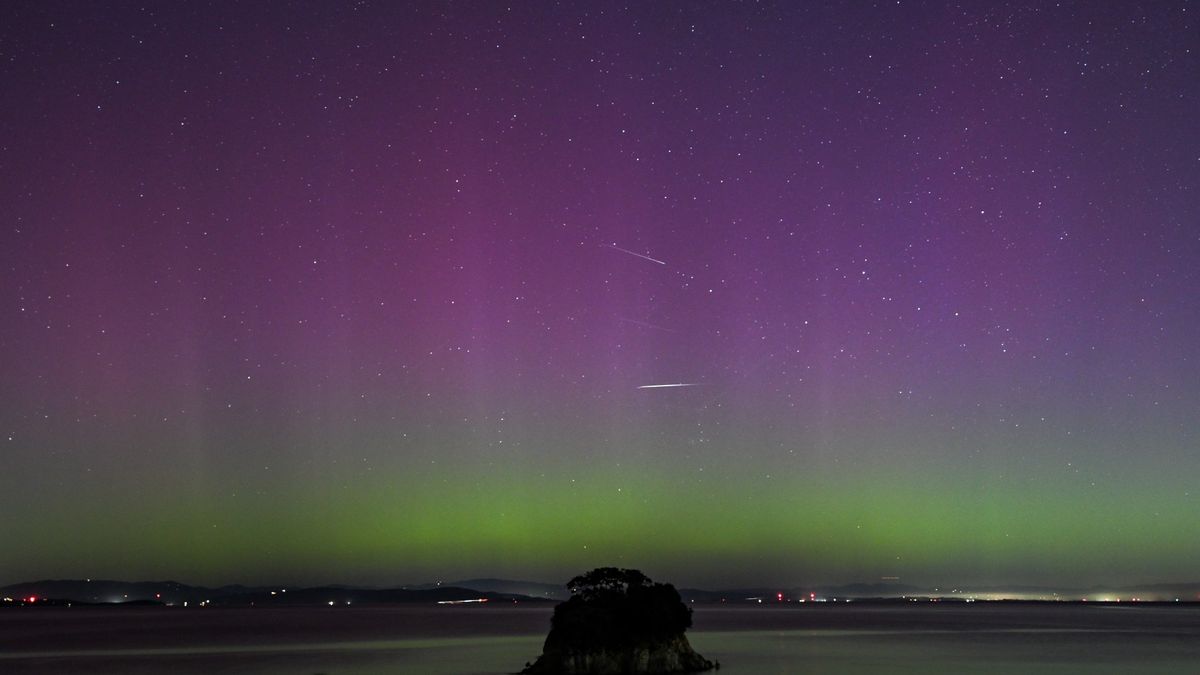Aurora and Perseid Meteor Shower: Double Sky Spectacle This Weekend

Stargazers are in for a treat this weekend, with the potential for a double sky spectacle: the peak of the Perseid meteor shower and a geomagnetic storm that could bring auroras to lower latitudes.
The National Oceanic and Atmospheric Administration (NOAA) Space Weather Prediction Center has issued a geomagnetic storm watch for 9-11 August, coinciding with the Perseid meteor shower's peak, which occurs around 11 August and before dawn on 12 August.
If the predicted moderate G2 conditions materialise, auroras might be visible as far south as New York and Idaho, according to NOAA. While geomagnetic storm warnings of this level are not uncommon, they are strong enough to trigger impressive displays of the northern lights.
A recent G1 storm, weaker than a G2 storm, still sparked magnificent auroras across the US and Canada. Even without reaching geomagnetic storm conditions, a strong solar substorm can create impressive auroras.
NOAA classifies geomagnetic storms using a G-scale, ranging from G5, the most extreme, to G1, minor class storms. The current watch is classified as a G2-class.
Three plumes of plasma and magnetic field, known as coronal mass ejections (CMEs), are behind the watch. Two CMEs erupted from the Sun on 7 August, and another launched during an X-class solar flare on 8 August. All three are now heading towards Earth, predicted to arrive late on 9 August and again by mid-to-late 11 August, according to NOAA's Space Weather Prediction Center forecast discussion.
However, predicting the exact arrival time of CMEs is challenging. Space weather, like terrestrial weather, is unpredictable.
Even if a CME strikes Earth, its impact on auroras depends on the magnetic field alignment within the CME. If the alignment allows it to connect with Earth's magnetosphere, spectacular northern lights displays could result. However, if Earth's magnetosphere "closes the door" on the CME, aurora chasers may be left disappointed.
When checking space weather data from resources like Space Weather Live, pay close attention to the Interplanetary Magnetic Field (IMF), especially the Bz value, which indicates the IMF's north-south direction. For a strong connection with Earth's northward-pointing magnetosphere, the Bz needs to be oriented southward, according to Space Weather Live.
Should favourable geomagnetic conditions occur, the incoming CME could trigger impressive mid-latitude auroras. CMEs carry electrically charged atoms called ions. When CMEs collide with Earth's magnetosphere, they can trigger geomagnetic storms. During these storms, ions interact with gases in Earth's atmosphere, releasing energy as light. This phenomenon is known as the northern lights, or aurora borealis, in the Northern Hemisphere, and the southern lights, or aurora australis, in the Southern Hemisphere.
To stay updated with the latest space weather alerts and forecasts, check out NOAA's Space Weather Prediction Center. It is also recommended to follow space weather physicist Tamitha Skov on X and YouTube for detailed reports and valuable aurora-hunting information.
If you capture a stunning photo or video of the northern or southern lights or the Perseid meteor shower and wish to share them with Space.com for a possible story, send images, comments on the view and your location, as well as use permissions to spacephotos@space.com.





